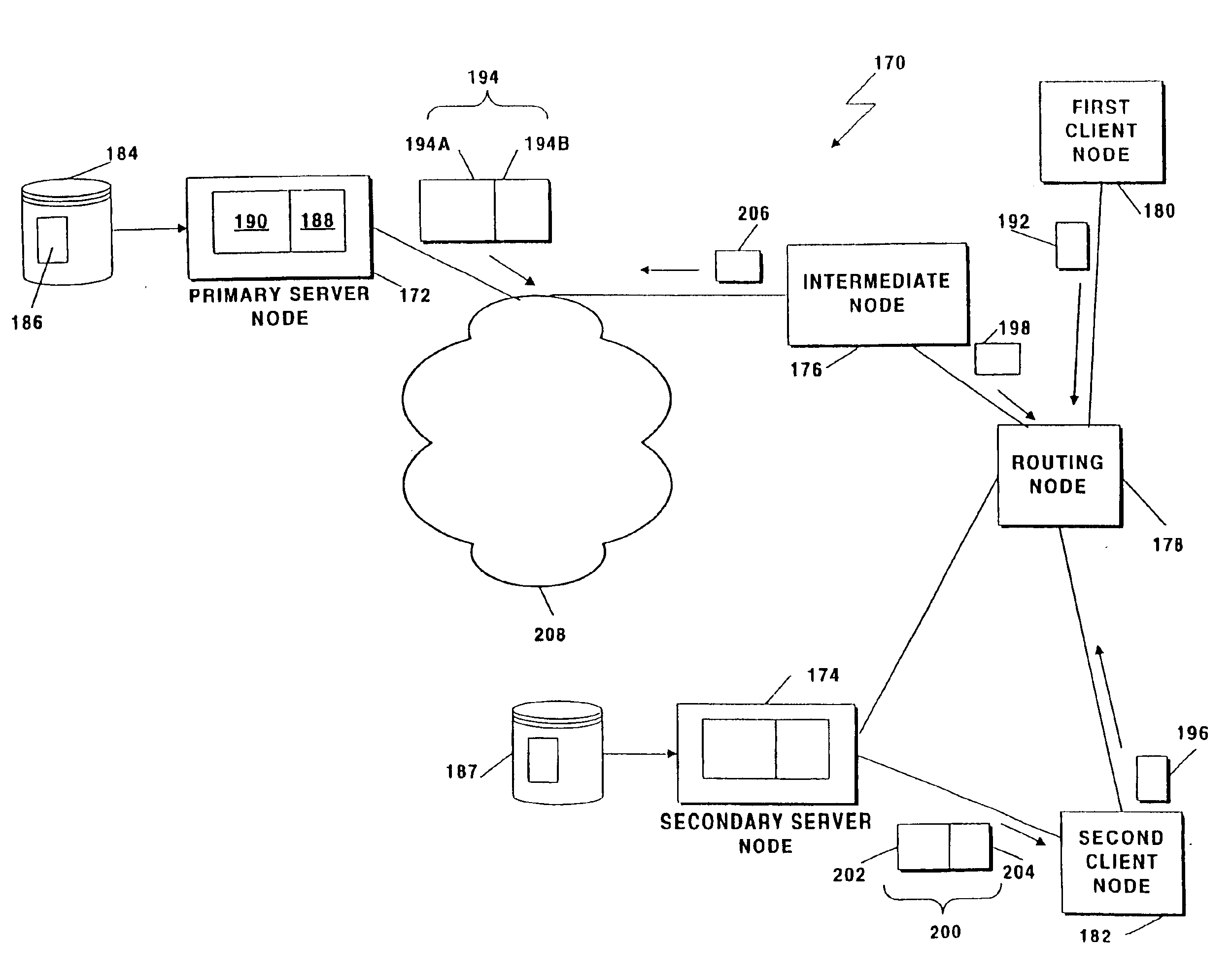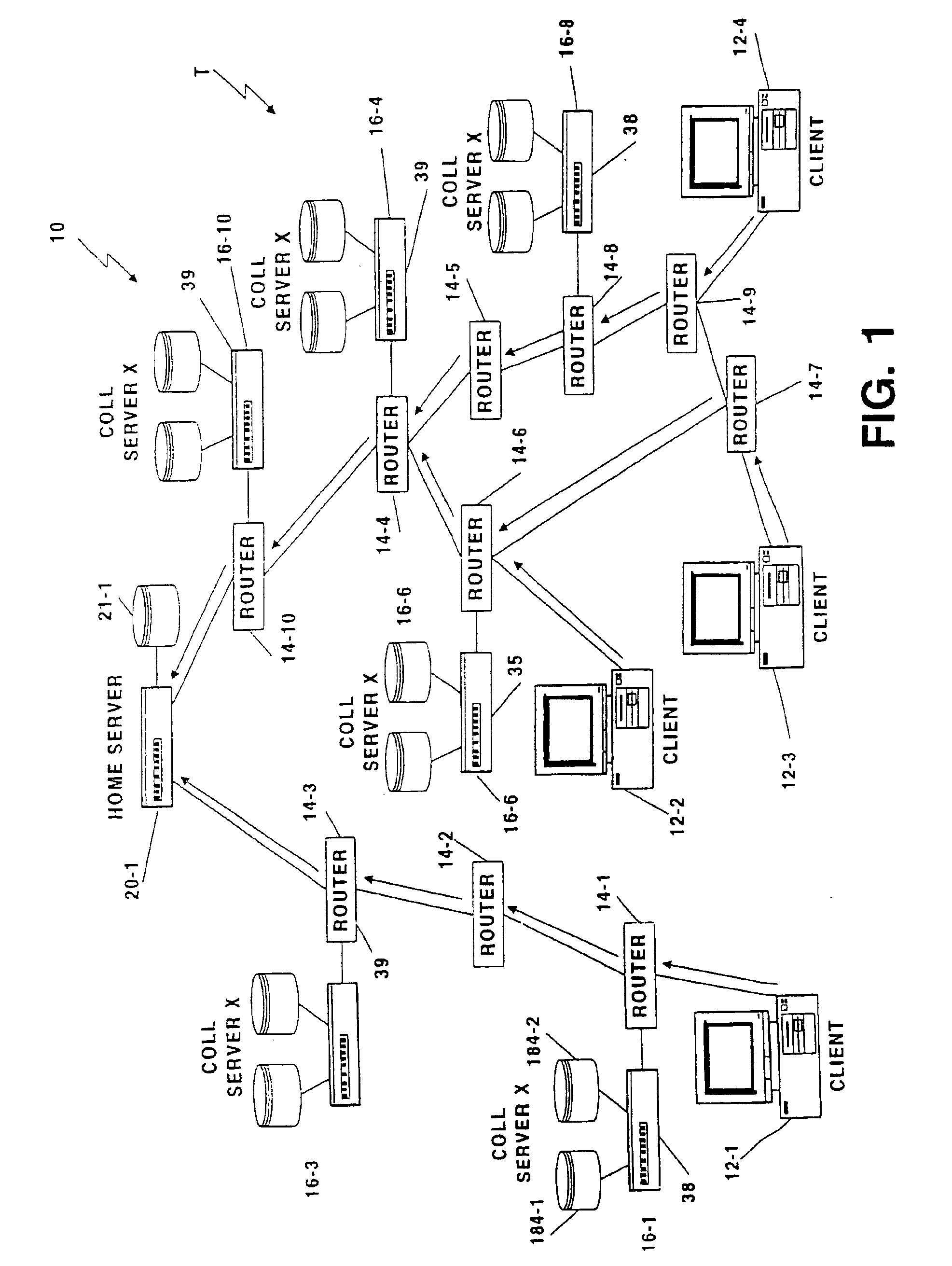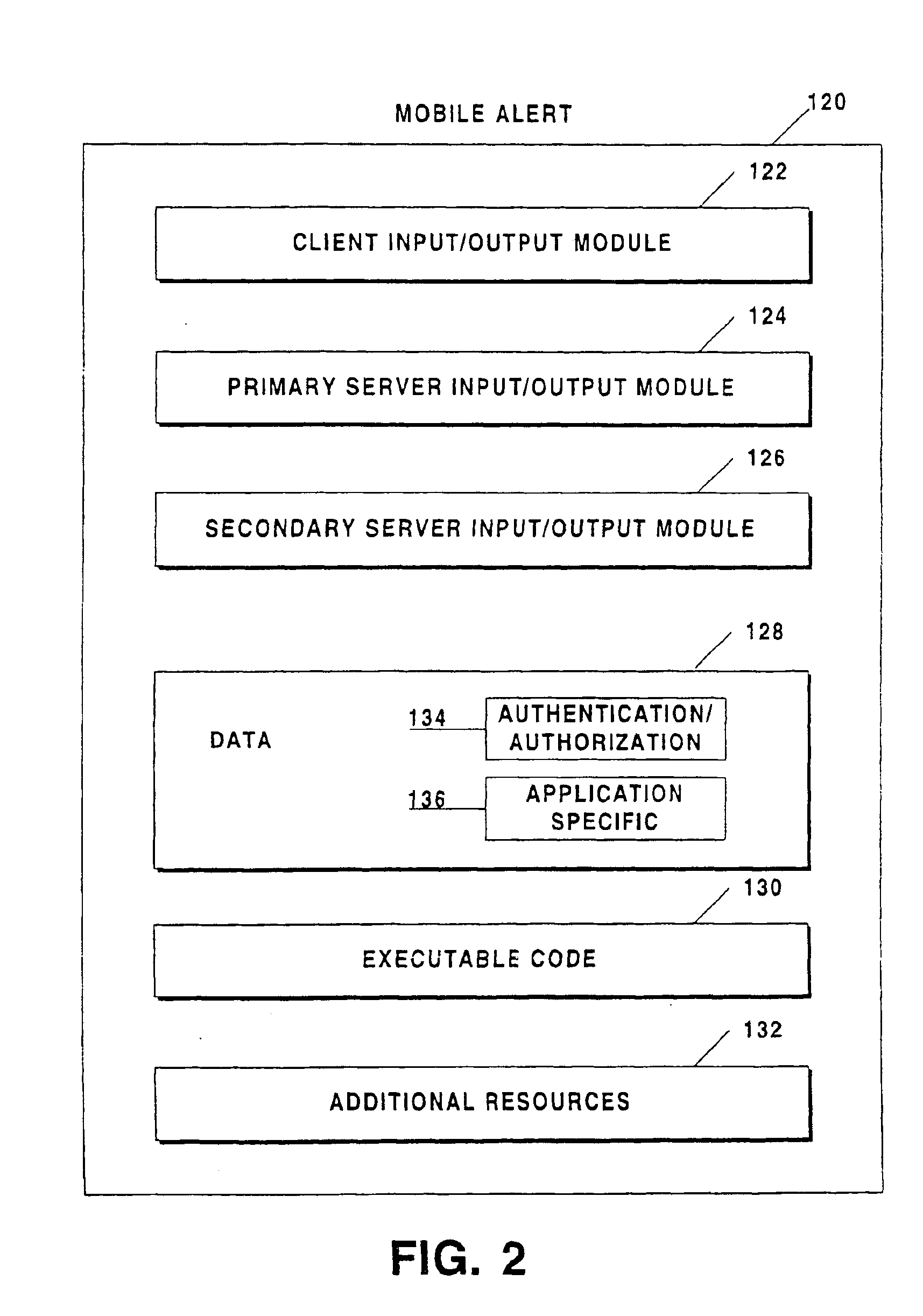Extending network services using mobile agents
a technology of network services and agents, applied in data switching networks, multi-programming arrangements, instruments, etc., can solve problems such as inability to change the nature of the way in which it is possible to use the internet, inability to meet the needs of users, so as to achieve the effect of reducing network traffi
- Summary
- Abstract
- Description
- Claims
- Application Information
AI Technical Summary
Benefits of technology
Problems solved by technology
Method used
Image
Examples
Embodiment Construction
[0034]Turning attention now to FIG. 1, a computer network 10 such as the Internet, extranet, private intranet, virtual private network, local area network, or any other type of computer network consists of a number of network entities (or nodes) including client computers 12-1, 12-2, 12-3, . . . , 12-4 (collectively, clients 12), routers 14-1, 14-2, . . . , 14-10, cache servers 16-1, 16-3, 16-4, 16-6, 16-8, and 16-10, and home server 20. The network may make use of any and various types of physical layer signal transmission media such as public and private telephone wires, microwave links, cellular and wireless, satellite links, and other types of data transmission.
[0035]In the illustrated network, certain routers 14 have associated with them cache servers 16, whereas other routers do not have associated cache servers. The cache servers 16 include various types of storage for documents in the form of a cache storage 18-1 which may include disk storage 18-1-1 and / or memory storage 18...
PUM
 Login to View More
Login to View More Abstract
Description
Claims
Application Information
 Login to View More
Login to View More - R&D
- Intellectual Property
- Life Sciences
- Materials
- Tech Scout
- Unparalleled Data Quality
- Higher Quality Content
- 60% Fewer Hallucinations
Browse by: Latest US Patents, China's latest patents, Technical Efficacy Thesaurus, Application Domain, Technology Topic, Popular Technical Reports.
© 2025 PatSnap. All rights reserved.Legal|Privacy policy|Modern Slavery Act Transparency Statement|Sitemap|About US| Contact US: help@patsnap.com



